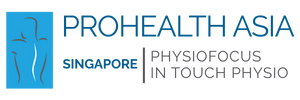Sciatica SOS: Targeted Exercises for Herniated Disc Relief (Ages 20-40 Focus)
Sciatica caused by a herniated disc can significantly impact daily life, especially for adults between 20 and 40 years old who balance work, fitness, and social responsibilities. Pain, numbness, or tingling in the lower back, buttocks, or legs can make simple movements challenging. While medical intervention may be necessary in severe cases, targeted exercises guided by physiotherapy can help relieve symptoms, improve mobility, and prevent further injury.
Understanding Sciatica and Herniated Discs
Sciatica occurs when the sciatic nerve is compressed or irritated, often due to a herniated disc in the lumbar spine. A herniated disc happens when the soft inner material of the disc protrudes through the outer layer, putting pressure on nearby nerves. Common causes include poor posture, heavy lifting, prolonged sitting, or sudden twisting movements.
Physiotherapy focuses on understanding the root cause of sciatica and developing a tailored exercise plan to relieve pressure on the nerve and strengthen supporting muscles. Early intervention is key to reducing pain and restoring function.
Benefits of Targeted Exercises
Targeted exercises help by:
Reducing nerve compression and pain.
Strengthening the core and lower back muscles.
Improving flexibility in the hamstrings and hips.
Enhancing posture and spinal alignment.
Supporting long-term spinal health to prevent recurrence.
Essential Exercises for Sciatica Relief
1. Pelvic Tilts
Lie on your back with knees bent and feet flat on the floor. Gently flatten your lower back against the ground by tightening your abdominal muscles and tilting your pelvis upward. Hold for a few seconds and release. Repeat 10 to 15 times. This exercise strengthens the core and reduces pressure on the lumbar spine.
2. Knee-to-Chest Stretch
While lying on your back, bring one knee toward your chest while keeping the other leg bent or straight on the floor. Hold for 20 to 30 seconds and switch sides. This stretch helps relieve lower back tension and reduces sciatic nerve irritation.
3. Piriformis Stretch
Sitting or lying on your back, cross one leg over the opposite knee and gently pull the lower leg toward your chest. Hold for 20 to 30 seconds on each side. Stretching the piriformis muscle can relieve pressure on the sciatic nerve.
4. Cat-Cow Stretch
On hands and knees, alternate between arching your back upward (cat) and lowering your belly while lifting your head and tailbone (cow). Perform 10 to 15 repetitions. This movement improves spinal flexibility and promotes healthy posture.
5. Bird-Dog Exercise
From a hands-and-knees position, extend one arm forward and the opposite leg backward, keeping your spine neutral. Hold for a few seconds, then switch sides. Repeat 10 times. Bird-dog exercises strengthen the core and lower back muscles to support spinal stability.
Tips for Exercise Success
Perform exercises slowly and with control to avoid aggravating the herniated disc.
Maintain good posture during daily activities to reduce pressure on the spine.
Avoid high-impact activities or heavy lifting until symptoms improve.
Combine exercises with regular walking or low-impact cardio to maintain overall fitness.
Consult a physiotherapist for a personalized plan and guidance.
Supporting Sciatica Recovery
In addition to exercises, lifestyle adjustments such as ergonomic work setups, proper lifting techniques, and adequate rest can accelerate recovery. For adults aged 20 to 40, addressing sciatica early helps maintain an active lifestyle and prevents chronic pain from developing.
Moving Forward
Targeted exercises guided by physiotherapy provide a practical and effective approach to managing sciatica caused by a herniated disc. By strengthening the core, improving flexibility, and maintaining spinal alignment, adults between 20 and 40 can experience pain relief, improved mobility, and long-term spinal health. Consistency, proper technique, and professional guidance are key to ensuring successful recovery and preventing future episodes.

